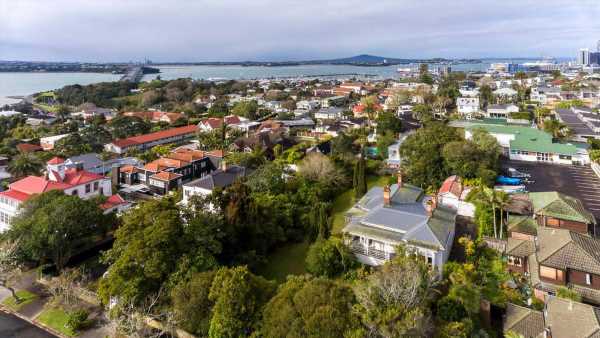Rents for New Zealand’s 1.3 million tenants rose 9.4 per cent annually, far outstripping the rate of inflation and placing many in what one academic called a “pretty bleak” position.
New data out today from Massey University today showed Hawke’s Bay tenants had the steepest price rises, up 20.4 per cent annually, from $401/week last June to $483/week in June this year.
Fast-rising Tauranga rents ranked the Bay of Plenty second with rents up 16 per cent annually from $432/week to $503/week.
Manawatu-Whanganui had the third-fastest rising rents, up 14.2 per cent annually from $339/week to $387/week.
Stats NZ said the annual inflation rate was 4.9 per cent so the rent rises are nearly double that.
Graham Squires, Massey University’s professor of property studies, said such steep rises made life harder for tenants.
“What we’re seeing annually is quite stark in terms of the rental market, close to a 10 per cent change. When we look at the quarterly change, it’s nothing too dramatic. But given we’re seeing housing affordability deteriorate – there is a relationship between the rental and house buying and selling market. Those are interconnected.
New Zealand had not only a shortage of properties for sale but also a shortage of rental properties at an affordable price point for tenants. A lot of houses bought for investment tend to be at the lower price points, he said.
“It’s a pretty bleak picture for tenants. It’s not looking good for renters or first home buyers. There’s a squeeze in the middle. Inflation is on the rise and the latest REINZ figures also show steep price rises.
“My argument is also that a lot of people are buying in far more highly-geared than they were 10 years ago. The investors will need to be able to cover their mortgages and that will put pressure on them. Landlords will feel the pressure and it tends to flow down the chain. So if there are not many rentals around, prices tend to rise.
“Landlords have rising costs, like changes in interest rate deductibility which means investors are either going to sell or put up rents. Given housing is a big investment, people tend to hold on to those assets meaning they have an incentive to increase rents rather than sell the property and leave the market.
The healthy homes standards were also having an impact, although they are very much needed, he said.
“But whether we like it or not, there’s a cost incurred in offering better quality housing. If landlords can increase rents and people don’t have a choice about whether to pay them or not, that’s the situation. They will rise.”
Rents in seven regions are now less affordable than the national average: Auckland, Northland, the Bay of Plenty, Gisborne, Hawke’s Bay, Tasman and Nelson.
Auckland rents rose a more modest 3.4 per cent annually, from $536/week last June to $554/week in June this year.
Fourteen of 16 regions recorded rent rises. Rents on the West Coast were down 3.1 per cent annually and in Otago, they stayed static annually.
Massey uses geometric mean rents which it says is a better measure of trends than medians or averages because rents at the top end of the market are down-weighted.
“Massey University’s latest rental report shows a national deterioration in rental affordability both quarterly [1.76 per cent index deterioration March – June] and annually [9.4 per cent] rental charge deterioration,” it said today.
The report also shows a decline in rental affordability in seven of the 16 regions from last quarter, with Southland and the West Coast bucking the trend.
Source: Read Full Article

/cloudfront-ap-southeast-2.images.arcpublishing.com/nzme/X55U4VHZ5ZVBQBFQ45UCF6TIJU.jpg)